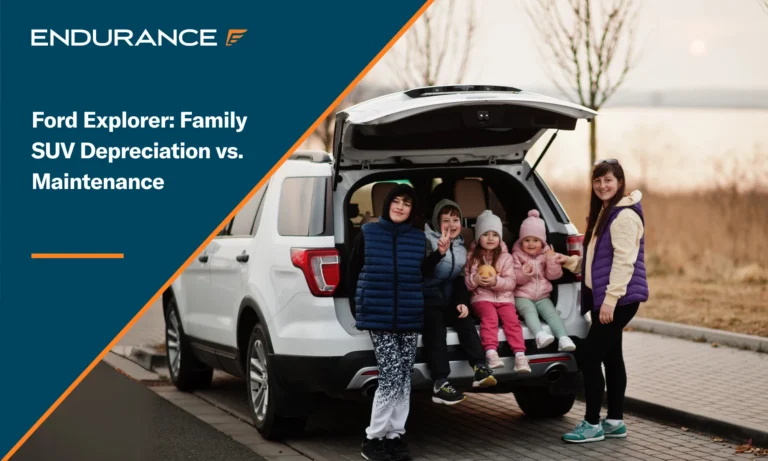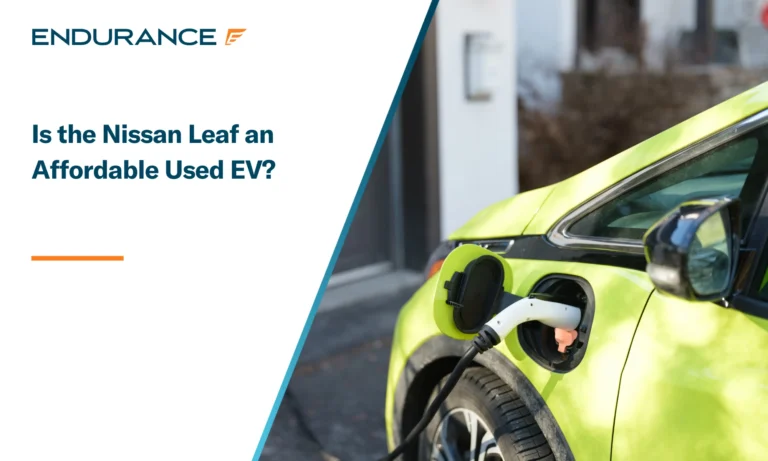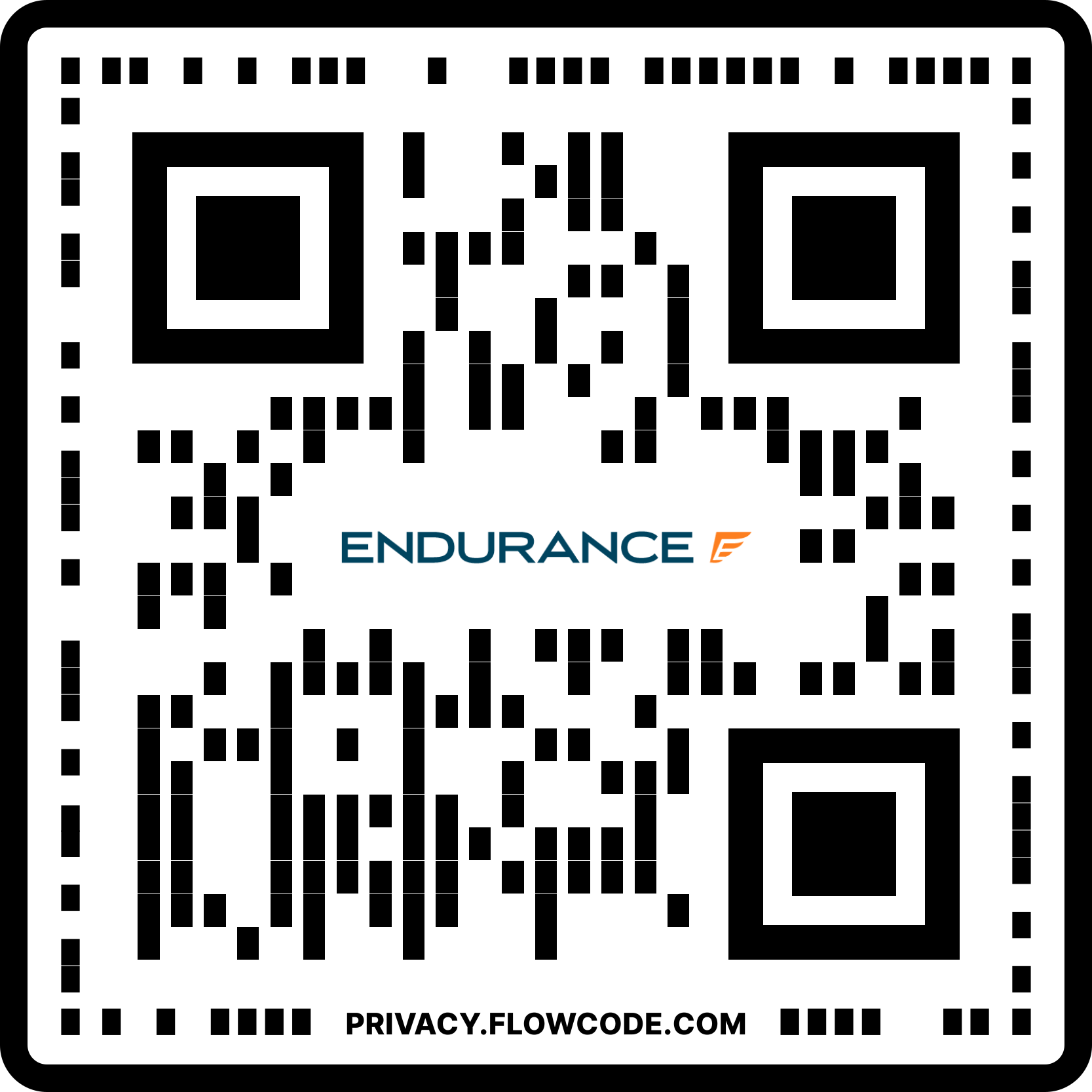Maximizing the Lifespan of Your Infiniti QX80

The Infiniti QX80 is often overshadowed by more popular rivals like the Lexus LX, Cadillac Escalade, Lincoln Navigator, and Mercedes-Benz GLS. Yet, this behemoth SUV has the same qualities: abundant power, ample passenger and cargo space, and a smooth ride.
This three-row Infiniti has something else in common with these plush rides: the need for proactive measures to maximize longevity. As is typical with most luxury vehicles, you can’t ignore maintenance, driving habits, and other ownership responsibilities.
So, assuming you want to keep your Infiniti QX80 on the road as long as possible, read on. We’ll explore common trouble spots for Infiniti owners, maintenance fundamentals, early warning signs of trouble, and being proactive about upkeep. Further, we’ll uncover how to protect your QX80’s functionality and your wallet if forward-thinking ownership can’t prevent an inevitable car repair.
About the Infiniti QX80
Infiniti launched a full-size flagship SUV for the 2004 model year with the QX56. The name continued with the debut of the second-generation model for 2011. Following a reshuffling of the automaker’s model designations, the QX56 was rebadged as the QX80 for the 2014 model year.
While much of what’s covered in this article applies to all QX56s and QX80s, we’re paying particular attention to the 2014 through 2020 QX80 editions. Why? Because these models don’t have or will soon lose factory warranty protection. In addition, five- to ten-year-old vehicles represent a sweet spot in the used car arena. They’ve lost significant market value, making them more affordable than their newer counterparts. Yet, age also causes these vehicles to be more vulnerable to breakdowns and surprise repair bills. And, these model years have been on the road long enough for there to be sufficient reliability data.
How Much Is an Infiniti QX80?
While a new Infiniti QX80 starts at $85,000 and crosses into six-figure territory for higher trims, used examples cost significantly less. According to Autotrader, a 2014 QX80 costs $5,000 to $20,000, depending on condition, mileage, equipment, and marketplace factors. Prices range from $23,000 to $42,000 for a 2020 Infiniti QX80.
Common Concerns About the Infiniti QX80
To get a real-world look at typical Infiniti QX80 problems, we analyzed owner complaints on file with the National Highway Traffic Safety Administration (NHTSA). This review revealed seven core trouble areas for the 2014 to 2020 Infiniti QX80:
- Engine and Timing Chain Issues
- Fuel System Problems
- Electrical System Failures
- Braking and Collision Systems
- Suspension and Structural Defects
- Airbag Concerns
- Visibility and Windshield Problems
While airbag and visibility issues (6 & 7 above) aren’t insignificant, they don’t represent most QX80 problems. Plus, these areas don’t involve primary mechanical systems like points 1-5. Let’s break down these primary trouble spots.
Engine and Timing Chain Issues:
Multiple complaints highlight timing chain failures. Owners report stretched timing chains requiring costly repairs, often exceeding $4,000. Some relate the issue to earlier Infiniti models (the QX56) that had recalls for the same problem.
Fuel System Problems:
Owners frequently report fuel leaks and strong gasoline odors while parked, particularly in the garage. Some suspect issues with fuel pressure sensors that loosen over time.
Electrical System Failures:
Complaints include:
- Battery drain issues: Vehicles repeatedly fail to start despite new batteries and alternator checks.
- Dashboard lighting failures: Instrument cluster lights dim or fail, making speedometers unreadable, particularly at night. Replacement parts have long wait times.
Braking and Collision Systems:
While some reports cover braking components like calipers, most brake-related reports involve unintended activation of the automatic emergency braking (AEB) system.
Suspension and Structural Defects:
- Rear suspension components and welds have reportedly broken without external impact, raising safety concerns.
- Structural issues such as popping noises and steering vibrations at moderate speeds appear unresolved.
Infiniti QX80 Recalls
Paying attention to recalls is an essential component of car ownership. Here’s a brief summary of the recalls for the 2014-2020 Infiniti QX80:
| QX80 Model Year | Recall Overview |
| 2020 | Fuel pump module issue where the impeller could swell and bind, potentially causing engine stall |
| 2019 | Back-up camera display issue where settings could make rear view image not visible |
| 2018 | Same back-up camera display issue as 2019 model |
| 2015 | Fuel pressure sensor that could loosen and cause fuel leak |
| 2014 | Three separate recalls: (1) Fuel pressure sensor that could loosen and cause fuel leak (2) Driver’s frontal airbag inflator defect that could cause metal fragments if deployed (3) Incorrect weight rating on certification label for vehicles with 20-inch wheels |
You’ll notice that one trouble spot, the fuel system, overlaps with some of the recalls. This underscores the importance of being alert to recalls, as Infiniti may cover these repairs.
Essential Maintenance Tasks for the Infiniti QX80
Ensuring your SUV is on a regular maintenance schedule is as vital as being aware of common Infiniti QX80 issues. This vehicle is far from a rough-and-tumble pickup truck. The QX80’s sophisticated systems require ongoing servicing to safeguard optimal performance and minimize breakdown risk. Here’s an outline of what needs attention and when, but always refer to the QX80 owner’s manual for exact service requirements.
Regular Oil Changes:
- Change synthetic oil every 7,500 miles under normal conditions (the interval may be less for older models)
- Reduce the interval to 5,000 miles for severe driving conditions (extreme temperatures, dusty environments, heavy traffic)
- Always use manufacturer-specified synthetic oil grade
Tire Care:
- Tire rotation every 5,000 to 7,500 miles
- Check tire pressure monthly
- Inspect tread wear patterns during rotation
- Pay extra attention to proper inflation due to vehicle weight, especially during temperature changes
Brake System:
- Inspect the brake system every 15,000 miles
- Replace brake fluid every 30,000 miles
- Check brake pad thickness during regular service
- Listen for unusual sounds during braking
Essential Fluid Services:
- Transmission fluid: Inspect every 60,000 miles
- Coolant: Replace every 30,000 miles
- Power steering fluid: Check during oil changes
- Differential fluid level: Inspect every 10,000 miles
Address Your Infiniti Vehicle Issues Early
Catching problems early can save thousands in repair costs. Keeping in mind the earlier list of typical Infiniti QX80 troubles, we’ve outlined the warning signs for these areas and added another critical system, the transmission, to be watchful of.
Engine Warning Signs:
- Rough idling or unusual vibrations
- Check engine light illumination
- Decreased power during acceleration
- Excessive exhaust smoke
- Unusual engine noises (knocking, ticking, or rattling)
- Higher than normal engine temperature
- Oil consumption increases
- Delayed or rough starting
Fuel System Issues:
- Persistent fuel odors, especially when parked
- Decreased fuel efficiency
- Rough idling or hesitation during acceleration
- Visible fuel leaks or dampness under the vehicle
Electrical System Warnings:
- Intermittent dashboard warnings
- Slow starter operation
- Dim or flickering lights
- Battery draining faster than normal
- Random electrical glitches in comfort features and accessories
Brake/AEB System Alerts:
- Unexpected automatic emergency braking activation
- Forward collision warning system triggering without obvious hazards
- AEB warning lights illuminating the dashboard
- Inconsistent brake pedal feel or responsiveness
- Warning messages about AEB system malfunction
- Brake system warning lights staying illuminated
- Regular brake issues (squealing, grinding, or vibration)
Suspension Red Flags:
- Knocking or clunking sounds over bumps
- Uneven tire wear patterns
- Excessive body roll during turns
- Vehicle pulling to one side
- Changes in ride height or stability
Transmission Warning Signs:
- Delayed engagement when shifting from park or neutral
- Rough or harsh shifting between gears
- Unusual noises during gear changes
- Transmission fluid with a burnt smell or dark color
Avoid any of these signals at your own peril. Swift action can prevent more extensive damage and a minor issue from turning into a major one.
Benefits of Proactive Care for a Luxury SUV
Taking a proactive approach to your QX80’s maintenance requirements can pay off in many ways.
Vehicle’s Performance Benefits
Few vehicles drive like a well-maintained Infiniti QX80. Staying on top of upkeep helps to:
- Maintain the smooth, quiet ride quality
- Preserve responsive handling characteristics
- Ensure consistent engine performance
- Keep safety systems operating at peak efficiency
Financial Advantages
Luxury cars can lead to eye-watering repair bills and pricier operating costs. The QX80 is no exception, so keeping everything in peak condition will:
- Minimize expensive repairs
- Reduce fuel consumption
- Lower long-term ownership costs
Resale Value Impact
Eventually, you’ll want to sell or trade-in your Infiniti QX80. Keeping the recommended maintenance schedule a priority helps the bottom line:
- Complete Infiniti service records can increase resale value
- A well-maintained vehicle commands higher prices
- A car with all features in operating condition attracts buyers
How Endurance Can Help Infiniti QX80 Owners
Owning an Infiniti QX80 without warranty protection leaves you vulnerable to a pricey driving experience. According to RepairPal, here’s a glimpse of what owners could face:
- Battery Cable Replacement: $1,576–$1,607
- Sunroof Motor Replacement: $1,178–$1,229
- Exhaust Manifold Replacement: $2,644–$2,813
- Backup Warning System Sensor Replacement: $1,999–$2,017
These numbers would be more like a down payment if work involved the engine or transmission. QX80 owners can find peace of mind with an Endurance Warranty plan (also called a vehicle service contract or auto protection plan).
Endurance offers a range of coverage options, including a powertrain program that safeguards the engine, transmission, and drive axles. Meanwhile, expanded plans protect the QX80 further, especially for those known trouble spots. Owners can also take advantage of the Supreme plan, which provides the ultimate coverage similar to new car bumper-to-bumper coverage.
No matter what you drive, every Endurance extended car warranty comes with valuable benefits, including 24/7 roadside assistance with towing, rental car reimbursement, trip interruption protection, and flexible payment terms. Importantly, you can take your car to any licensed facility for covered repairs. This is a particularly valuable perk if your QX80 needs specialized work that is only available at an Infiniti dealer.
Drive Protected With Endurance
Learn how Endurance Warranty can help your Infiniti QX80’s durability and longevity – and all your cars! Request a free online quote or visit the Endurance online store to see your price now. Endurance plan advisors can also be reached for one-on-one help by calling (800) 253-8203.
Check out the Endurance blog for articles covering a range of on-target topics, including car care, routine maintenance advice, DIY tips, vehicle reviews, and more.













Dave is an automotive journalist combining a deep passion for cars, hands-on mechanical experience, and dealership insight. His writing primarily focuses on consumer auto advice and enthusiast pieces. A regular contributor to SlashGear.com and other leading automotive platforms, Dave earned his BA in Journalism from The George Washington University.